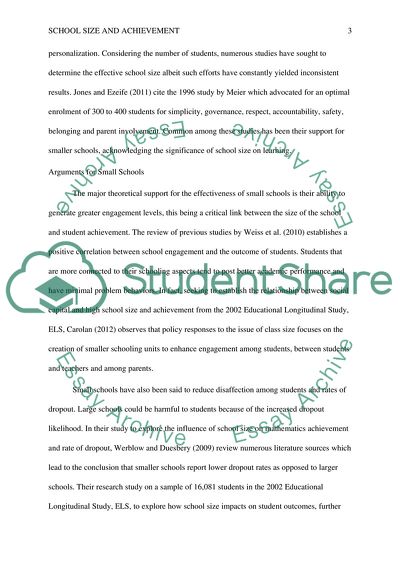Cite this document
(School Size and Academic Achievement Coursework Example | Topics and Well Written Essays - 2250 words, n.d.)
School Size and Academic Achievement Coursework Example | Topics and Well Written Essays - 2250 words. https://studentshare.org/education/1847257-school-size-and-academic-achievement
School Size and Academic Achievement Coursework Example | Topics and Well Written Essays - 2250 words. https://studentshare.org/education/1847257-school-size-and-academic-achievement
(School Size and Academic Achievement Coursework Example | Topics and Well Written Essays - 2250 Words)
School Size and Academic Achievement Coursework Example | Topics and Well Written Essays - 2250 Words. https://studentshare.org/education/1847257-school-size-and-academic-achievement.
School Size and Academic Achievement Coursework Example | Topics and Well Written Essays - 2250 Words. https://studentshare.org/education/1847257-school-size-and-academic-achievement.
“School Size and Academic Achievement Coursework Example | Topics and Well Written Essays - 2250 Words”. https://studentshare.org/education/1847257-school-size-and-academic-achievement.


